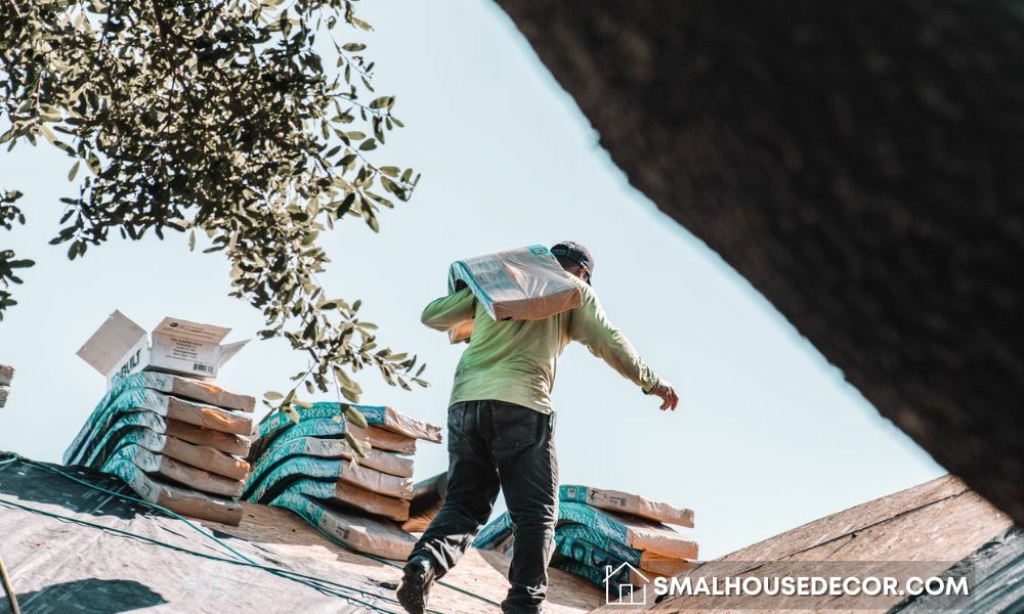As a homeowner, there are few experiences more empowering than knowing your roof can withstand anything Mother Nature can throw at it. Your home is the foundation of safety and security for you and your family, so having a resilient roofing system in place will give you peace of mind during winter storms or any other type of inclement weather
While no one can prevent bad weather from occurring, there are several steps homeowners can take to make sure their roofs are able to bear up during a storm. If you want to safeguard the integrity of your home’s roofing system by ensuring it is prepared with necessary maintenance tasks needed ahead of time, then read on! We’ll reveal 6 shortcuts that will bolster your roof’s resilience during tough times – helping ensure your HOME remains one step above even nature’s most fierce winds.

- Roof repair and maintenance
Regular roof repair and maintenance are key to ensuring its durability and longevity. Consider looking into tips for roof repair and maintenance, such as replacing damaged shingles, sealing any potential leaks, and ensuring proper attic ventilation. Look for signs of wear and tear, such as missing shingles, leaks, or water stains. It’s recommended to conduct a thorough inspection at least twice a year, once in the spring and once in the fall, to identify any issues that need to be addressed. Besides inspections, routine cleaning of the roof and gutters is also essential. Clearing debris, such as leaves, branches, and dirt, can prevent water buildup and potential damage. Remember, a well-maintained roof is a resilient roof.
- Identify the most vulnerable areas of your roof
As storm season approaches, it is crucial to identify the most vulnerable areas of your roof to avoid potential damage. One of the most common vulnerable areas is the edges of the roof where the shingles are located. Shingles tend to lift up and curl around the edges when there is strong wind or heavy rain.
Another area vulnerable to damage is the gutters. Clogged gutters can lead to water backups that can seep into your home’s foundation or cause water damage to your roof. Chimneys and skylights are additional areas to inspect for potential vulnerabilities. Proper preparation and maintenance of these areas can go a long way in protecting your home during storm season.
Also Read: 12 Black Gutters on House Ideas: Make Your House Stand Out!
- Select the right materials
Choosing the right materials for your roof based on your region’s climate and weather conditions is vital for enhancing its resilience. For regions with heavy snowfall, roofs made of metal or slate are ideal as they are resistant to the weight of the snow and facilitate its easy shedding. For areas prone to hurricanes or high winds, roofing materials such as asphalt shingles, metal roofing, or tiles can provide maximum resistance. In regions experiencing high heat or sun exposure, reflective roofing materials can help in temperature regulation, reducing energy costs. Therefore, the appropriate selection of roofing materials according to local weather conditions not only ensures the longevity of the roof but also contributes to energy efficiency and cost savings.
- Invest in reinforcement measures
In addition to selecting the right roofing materials, homeowners can also consider investing in reinforcement measures to further enhance their roof’s resilience. Installing hurricane straps or clips can help secure the roof’s connection to the walls and foundation, preventing it from being blown off during strong winds. Adding a secondary waterproofing layer underneath shingles or tiles can also provide extra protection against leaks and water damage. For regions prone to hailstorms, impact-resistant shingles or a hail guard system can also be considered as reinforcement measures. These additional steps can greatly increase the durability and resilience of your roof during extreme weather events.
- Invest in a professional inspection
Engaging the services of a professional for a thorough roof inspection is a wise investment for homeowners. These experts can identify minor issues like cracked or missing shingles, loose flashing, or minor leakages before they escalate into major problems. They also have the expertise to pinpoint less obvious defects that an untrained eye might miss. Proactive inspection allows homeowners to handle repairs in a timely manner, preventing higher costs down the line due to damage control or roof replacement. More importantly, it ensures the roof’s integrity, contributing to the overall safety, comfort, and value of your home.
- Regularly check for any signs of roof damage or deterioration
Regular maintenance and vigilance are key to preventing costly repairs or replacements. Homeowners should regularly check for any signs of roof damage or deterioration. This includes looking for missing or damaged shingles, visible sagging, and signs of water damage inside the home such as stains or mold. Evidence of pests or critters, such as nesting or chewed areas, should also be addressed promptly. Regular inspections, particularly after severe weather events, can help detect issues early on and prevent small problems from escalating into major ones.
Safeguarding your home’s roof from severe weather conditions requires a proactive and comprehensive approach. Regular repair and maintenance, identifying vulnerabilities, selecting materials based on regional climate, investing in reinforcement measures, professional inspections, and vigilance towards signs of damage are all crucial steps in this process.
By adhering to these guidelines, homeowners can ensure their roof’s longevity, maintain their home’s value, and most importantly, ensure their family’s safety and peace of mind, regardless of the weather outside.